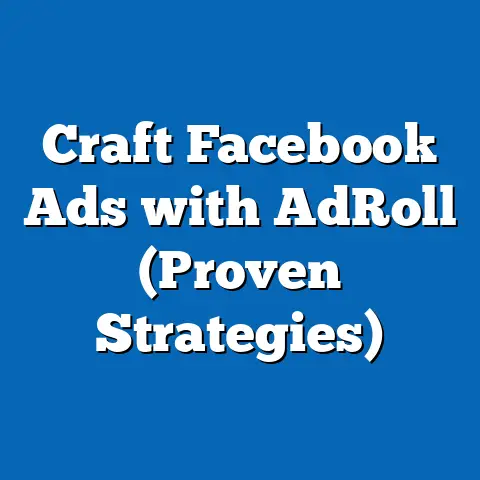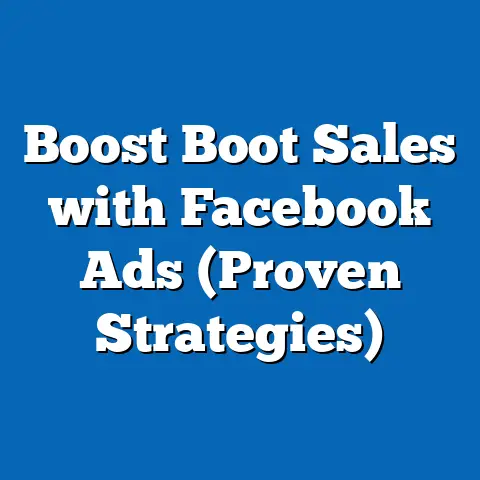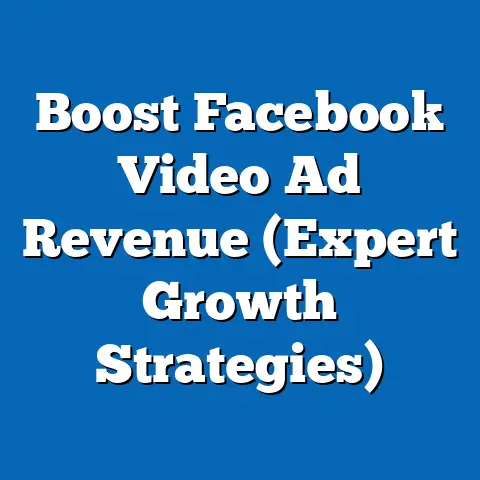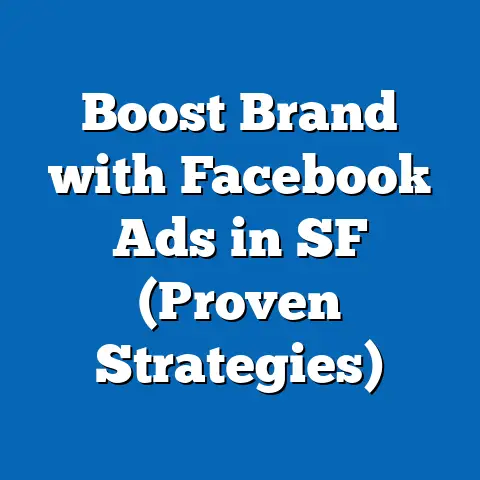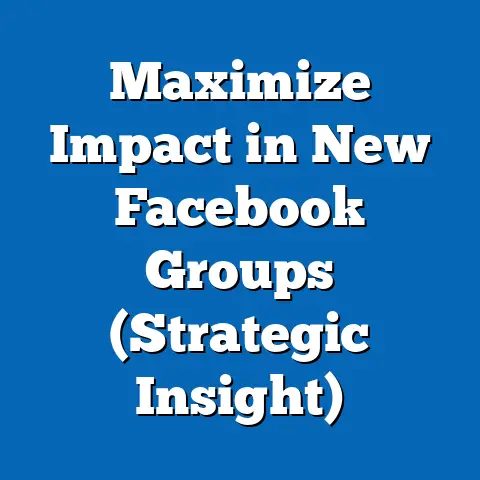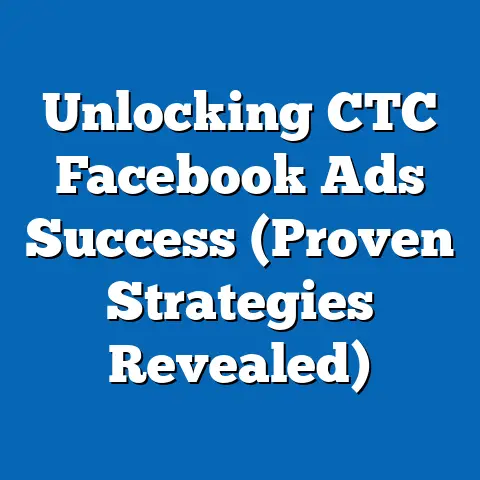Download Facebook for Free (Ultimate Guide to Unlocking Access)
What if you could instantly connect with loved ones across the globe, share life’s precious moments, and stay informed about the world’s happenings – all with a simple tap on your phone? What if you could access a platform that fosters communities, fuels your passions, and even helps build your brand, and all of it without spending a single penny? Welcome to the captivating world of Facebook, where staying connected and informed is just a free download away. I remember when Facebook first hit the scene; it was a game-changer, connecting me with people I hadn’t spoken to in years. Now, it’s a global phenomenon, and this guide will show you how to unlock its full potential, completely free.
Understanding Facebook
Facebook, at its core, is a social media platform. But it’s so much more than that. It’s a digital town square, a virtual photo album, a news aggregator, and a marketplace all rolled into one. Its primary purpose is to connect people with friends, family, and communities, allowing them to share thoughts, experiences, and information. In today’s digital landscape, Facebook’s significance is undeniable. It’s a primary source of news for many, a vital tool for businesses, and a powerful force in shaping public opinion.
The basic features of Facebook are designed to facilitate connection and sharing.
- Profiles: Your personal space on Facebook, showcasing your identity, interests, and connections.
- Pages: Public profiles for businesses, organizations, and public figures, used to share information and engage with followers.
- Groups: Communities centered around shared interests, hobbies, or causes, providing a space for discussion and interaction.
- News Feed: A constantly updating stream of content from friends, pages, and groups you follow, tailored by Facebook’s algorithm.
One of the most appealing aspects of Facebook is that it’s a free service. But how does Facebook offer such a powerful platform without charging users? The answer is advertising. Facebook generates revenue by selling ad space to businesses who want to reach its massive user base. This model allows users to access the platform and its features without paying a subscription fee. Personally, I appreciate this model because it allows everyone, regardless of income, to stay connected. It’s a testament to the power of advertising in the digital age.
Key Takeaway: Facebook is a free social media platform that connects billions of people worldwide, generating revenue through advertising. Understanding its core features is the first step to unlocking its potential.
Why Download Facebook?
While you can access Facebook through a web browser, downloading the Facebook app offers several key advantages. It’s more than just a convenience; it’s about enhancing your overall experience. I’ve used both the app and the browser version extensively, and the app consistently provides a smoother, more integrated experience.
- Accessibility: The app is readily available on your smartphone or tablet, allowing you to access Facebook anytime, anywhere. No need to boot up your computer or navigate to a website.
- User Experience: The app is optimized for mobile devices, offering a streamlined interface and faster loading times compared to the browser version. I find the app much more intuitive and easier to navigate.
- Mobile Notifications: Receive instant notifications about new messages, friend requests, and updates from your network, ensuring you never miss out on important information. This is a huge advantage over the browser version, which relies on you actively checking the site.
The numbers speak for themselves. As of 2023, Facebook boasts nearly 3 billion monthly active users worldwide. A significant portion of these users primarily access Facebook through the mobile app. This highlights the app’s impact on social connectivity. It’s not just about convenience; it’s about being part of a global community that’s constantly connected.
Downloading the app is about more than just convenience; it’s about enhancing your overall experience and staying connected in a way that seamlessly integrates into your daily life.
Key Takeaway: Downloading the Facebook app offers enhanced accessibility, a better user experience, and instant mobile notifications, making it the preferred way for many users to stay connected.
How to Download Facebook for Free
Downloading the Facebook app is a straightforward process, regardless of the device you’re using. Here’s a step-by-step guide for Android, iOS, and desktop users:
For Android Users:
- Navigate to the Google Play Store: Open the Play Store app on your Android device. It’s usually represented by a colorful triangle icon.
- Search for “Facebook”: Tap the search bar at the top of the screen and type “Facebook.”
- Click “Install” and Follow Instructions: Once you find the official Facebook app, tap the “Install” button. The app will begin downloading and installing automatically. Follow any on-screen prompts to complete the installation.
For iOS Users:
- Open the App Store: Locate and open the App Store app on your iPhone or iPad. It’s represented by a blue icon with a white “A” in the center.
- Search for “Facebook”: Tap the “Search” tab at the bottom of the screen and type “Facebook” into the search bar.
- Tap “Get” and Authenticate if Necessary: Find the official Facebook app and tap the “Get” button. You may be prompted to authenticate with your Apple ID password or Touch ID/Face ID to begin the download and installation process.
For Desktop Users:
While there isn’t a dedicated Facebook desktop app, you can still access Facebook via a web browser.
- Open a Web Browser: Launch your preferred web browser, such as Chrome, Firefox, Safari, or Edge.
- Navigate to Facebook.com: Type “facebook.com” into the address bar and press Enter.
- Consider Desktop Applications (Optional): While Facebook itself doesn’t offer a native desktop app, some third-party apps mimic the functionality of the mobile app. However, I recommend sticking to the official website for security and reliability.
Downloading and installing Facebook is a simple process, regardless of your device. Just follow these steps, and you’ll be ready to connect with friends and family in no time.
Key Takeaway: Downloading Facebook is easy. Whether you’re on Android, iOS, or desktop, follow these simple steps to get connected.
Setting Up Your Facebook Account
Once you’ve downloaded the Facebook app, the next step is setting up your account. This process is relatively straightforward, but it’s essential to provide accurate information and understand the privacy settings involved. I always advise people to take their time during this step, as it lays the foundation for your entire Facebook experience.
- Open the Facebook App: Launch the Facebook app on your device.
- Tap “Create New Account”: On the login screen, you’ll see a button labeled “Create New Account.” Tap this button to begin the registration process.
-
Provide Necessary Information: You’ll be asked to provide the following information:
- First Name and Last Name: Enter your legal first and last name.
- Date of Birth: Provide your accurate date of birth. This information is used to verify your age and ensure you comply with Facebook’s age restrictions.
- Gender: Select your gender from the provided options.
- Mobile Number or Email Address: Choose whether you want to register using your mobile number or email address. If you choose mobile number, you’ll receive a verification code via SMS. If you choose email address, you’ll receive a verification email.
- Password: Create a strong, unique password that you’ll remember. Avoid using easily guessable information like your birthday or name.
- Verify Your Account: Follow the instructions to verify your account using the verification code sent to your mobile number or email address.
- Set Up Your Profile (Optional): After verifying your account, you’ll have the option to add a profile picture, cover photo, and other information to your profile. This is a great way to personalize your account and help friends find you.
- Review and Adjust Privacy Settings: Before you start using Facebook, take some time to review and adjust your privacy settings. You can control who can see your posts, who can find you in searches, and who can send you friend requests.
Provide Necessary Information: You’ll be asked to provide the following information:
- First Name and Last Name: Enter your legal first and last name.
- Date of Birth: Provide your accurate date of birth. This information is used to verify your age and ensure you comply with Facebook’s age restrictions.
- Gender: Select your gender from the provided options.
- Mobile Number or Email Address: Choose whether you want to register using your mobile number or email address. If you choose mobile number, you’ll receive a verification code via SMS. If you choose email address, you’ll receive a verification email.
- Password: Create a strong, unique password that you’ll remember. Avoid using easily guessable information like your birthday or name.
- Verify Your Account: Follow the instructions to verify your account using the verification code sent to your mobile number or email address.
- Set Up Your Profile (Optional): After verifying your account, you’ll have the option to add a profile picture, cover photo, and other information to your profile. This is a great way to personalize your account and help friends find you.
- Review and Adjust Privacy Settings: Before you start using Facebook, take some time to review and adjust your privacy settings. You can control who can see your posts, who can find you in searches, and who can send you friend requests.
Privacy Settings:
Understanding and adjusting your privacy settings is crucial to securing your personal information on Facebook. Here are a few key settings to consider:
- Who can see your future posts? This setting allows you to control who can see the posts you share on your timeline. You can choose from options like “Public,” “Friends,” “Friends except…,” or “Only me.”
- Who can see the people, Pages and lists you follow? This setting allows you to control who can see the Pages and people you follow.
- How people can find and contact you: These settings allow you to control who can send you friend requests, who can look you up using your email address or phone number, and whether search engines outside of Facebook can link to your profile.
I always emphasize the importance of strong passwords and regularly reviewing privacy settings. It’s your responsibility to protect your personal information online.
Key Takeaway: Setting up your Facebook account involves providing accurate information, verifying your account, and understanding and adjusting your privacy settings.
Navigating Facebook
Now that you’ve downloaded the app and set up your account, it’s time to learn how to navigate the Facebook interface and use its core features. Facebook’s interface can seem overwhelming at first, but with a little practice, you’ll be navigating it like a pro. I remember when I first joined; it took me a while to figure out the difference between a profile and a page!
- Home Screen (News Feed): The home screen is where you’ll find your news feed, a constantly updating stream of content from friends, pages, and groups you follow. The algorithm determines what you see based on your interactions and preferences.
- Profile Page: Your profile page is your personal space on Facebook, showcasing your information, posts, photos, and connections. You can access your profile by tapping your name or profile picture in the top left corner of the app.
- Friend Requests: You can manage your friend requests by tapping the “Friends” icon at the top of the screen.
- Messages: You can send and receive messages by tapping the “Messages” icon at the top of the screen. This will take you to Facebook Messenger.
- Notifications: You can view your notifications by tapping the “Notifications” icon at the top of the screen. This will show you updates about friend requests, messages, comments, and other activities related to your account.
-
Menu: The menu icon (usually represented by three horizontal lines) provides access to a variety of settings, features, and tools, including:
- Groups: Discover and join groups based on your interests.
- Pages: Create and manage pages for your business or organization.
- Events: Discover and create events happening near you.
- Marketplace: Buy and sell items locally.
- Settings & Privacy: Adjust your privacy settings, manage your account, and customize your Facebook experience.
Menu: The menu icon (usually represented by three horizontal lines) provides access to a variety of settings, features, and tools, including:
- Groups: Discover and join groups based on your interests.
- Pages: Create and manage pages for your business or organization.
- Events: Discover and create events happening near you.
- Marketplace: Buy and sell items locally.
- Settings & Privacy: Adjust your privacy settings, manage your account, and customize your Facebook experience.
Finding Friends:
One of the primary purposes of Facebook is to connect with friends and family. Here’s how to find friends on Facebook:
- Use the Search Bar: Type the name of the person you’re looking for into the search bar at the top of the screen.
- Browse Suggested Friends: Facebook will suggest friends based on your existing connections and profile information.
- Import Contacts: You can import your contacts from your phone or email address book to find friends who are already on Facebook.
Joining Groups:
Joining groups is a great way to connect with people who share your interests. Here’s how to join groups on Facebook:
- Use the Search Bar: Type the name of the group you’re looking for into the search bar at the top of the screen.
- Browse Suggested Groups: Facebook will suggest groups based on your interests and profile information.
- Explore the “Groups” Section: Navigate to the “Groups” section in the menu to discover new groups.
Creating Posts:
Sharing your thoughts and experiences is a core part of the Facebook experience. Here’s how to create posts on Facebook:
- Tap “What’s on your mind?”: On your home screen or profile page, tap the “What’s on your mind?” text box.
- Write Your Post: Type your message into the text box.
- Add Photos/Videos: Tap the “Photo/Video” icon to add photos or videos to your post.
- Tag Friends: Tag friends in your post by typing “@” followed by their name.
- Choose Your Audience: Select who can see your post by tapping the audience selector (e.g., “Friends,” “Public”).
- Tap “Post”: Tap the “Post” button to share your post with your selected audience.
Understanding the News Feed Algorithm:
Facebook’s news feed algorithm determines what content you see in your news feed. The algorithm prioritizes content based on factors like:
- Relationship: Content from friends and family you interact with frequently.
- Engagement: Content that receives a lot of likes, comments, and shares.
- Relevance: Content that aligns with your interests and preferences.
- Timeliness: Recent content is prioritized over older content.
Understanding how the algorithm works can help you optimize your Facebook experience. For example, if you want to see more content from a particular friend or page, interact with their posts more frequently.
Key Takeaway: Navigating Facebook involves understanding the app’s interface, finding friends, joining groups, creating posts, and understanding the news feed algorithm.
Tips for Maximizing Your Facebook Experience
Now that you know how to navigate Facebook, here are some tips for maximizing your experience and getting the most out of the platform. I’ve learned these tips through years of using Facebook, and they’ve helped me stay connected, informed, and entertained.
- Engage with Content Effectively: Don’t just scroll through your news feed passively. Take the time to like, share, and comment on content that you find interesting. This will help you build relationships with your friends and followers, and it will also signal to the algorithm that you’re interested in seeing more content like that.
- Follow Pages Relevant to Your Interests: Following pages related to your hobbies, interests, or professional goals is a great way to stay informed and discover new information. You can follow pages for businesses, organizations, public figures, and even news outlets.
- Use Hashtags: Hashtags are a way to categorize your posts and make them discoverable to a wider audience. Use relevant hashtags to increase the visibility of your posts and connect with people who share your interests.
- Explore Facebook Events: Facebook Events is a great way to discover events happening near you, from concerts and festivals to workshops and meetups. You can also create your own events and invite your friends.
- Utilize Facebook Marketplace: Facebook Marketplace is a platform for buying and selling items locally. It’s a great way to declutter your home, find deals on used items, or even start a small business.
- Join Facebook Groups: Facebook Groups are communities centered around shared interests, hobbies, or causes. Joining groups is a great way to connect with like-minded individuals, share information, and participate in discussions.
Key Takeaway: Maximize your Facebook experience by engaging with content effectively, following relevant pages, using hashtags, exploring Facebook Events, utilizing Facebook Marketplace, and joining Facebook Groups.
Troubleshooting Common Issues
Even with a smooth user experience, you might encounter some common issues when downloading or using Facebook. Here are some troubleshooting tips to help you resolve these problems. I’ve dealt with these issues myself, and these solutions have always worked for me.
- Login Failures: If you’re having trouble logging into your account, make sure you’re entering the correct email address or mobile number and password. If you’ve forgotten your password, you can reset it by clicking the “Forgot password?” link on the login screen.
- App Crashes: If the Facebook app is crashing frequently, try clearing the app cache and data in your device’s settings. You can also try uninstalling and reinstalling the app.
- Connectivity Problems: If you’re having trouble connecting to Facebook, make sure you have a stable internet connection. You can also try restarting your device or resetting your network settings.
- Notification Issues: If you’re not receiving notifications, check your notification settings in the Facebook app and in your device’s settings. Make sure notifications are enabled for Facebook.
- App Update: Keeping your app updated is very important. It helps to resolve the issues that you may face.
Keeping the App Updated:
Keeping the Facebook app updated is essential for optimal performance and security. Updates often include bug fixes, performance improvements, and new features. You can update the Facebook app in the Google Play Store (Android) or the App Store (iOS).
Key Takeaway: Troubleshoot common issues by checking your login credentials, clearing the app cache and data, ensuring a stable internet connection, checking your notification settings, and keeping the app updated.
Exploring Facebook Beyond Social Networking
Facebook is more than just a social networking platform; it’s a versatile tool that can be used for a variety of purposes. I’ve seen firsthand how businesses, communities, and individuals have leveraged Facebook to achieve their goals.
- Business: Businesses can use Facebook to reach a wider audience, promote their products and services, and engage with their customers. Facebook Ads is a powerful advertising platform that allows businesses to target their ads to specific demographics and interests.
- Community Engagement: Facebook Groups are a great way to connect with like-minded individuals and build communities around shared interests. You can use Facebook Groups to organize events, share information, and facilitate discussions.
- Content Creation: Facebook is a great platform for sharing your creative work with the world. You can share photos, videos, blog posts, and other types of content with your friends and followers.
- Facebook Ads: Facebook Ads is a powerful advertising platform that allows businesses to target their ads to specific demographics and interests. This is a very effective way to create brand awareness.
Key Takeaway: Explore Facebook beyond social networking by using it for business, community engagement, content creation, and advertising.
Staying Safe on Facebook
While Facebook offers many benefits, it’s also important to be aware of the potential risks and take steps to stay safe online. I always advise people to be cautious and protect their personal information.
- Recognizing Scams: Be wary of scams and phishing attempts. Never click on suspicious links or provide personal information to unknown sources.
- Managing Friend Requests: Only accept friend requests from people you know and trust. Be cautious of fake profiles and imposters.
- Adjusting Privacy Settings: Review and adjust your privacy settings regularly to control who can see your posts, who can find you in searches, and who can send you friend requests.
- Reporting Issues: If you encounter any suspicious activity or content, report it to Facebook immediately.
- Two-Factor Authentication: Enable two-factor authentication to add an extra layer of security to your account. This requires you to enter a code from your phone in addition to your password when logging in.
Key Takeaway: Stay safe on Facebook by recognizing scams, managing friend requests, adjusting privacy settings, reporting issues, and enabling two-factor authentication.
Conclusion
Downloading Facebook for free is your gateway to a world of connection, information, and community. By following the steps outlined in this guide, you can easily download the app, set up your account, navigate the interface, and maximize your experience. Remember to prioritize your safety and privacy while using the platform. Connecting with others and engaging with content has never been easier or more accessible. So go ahead, download Facebook and unlock its full potential. I hope this guide has helped you understand the power and simplicity of accessing Facebook. Now, go out there and connect!

